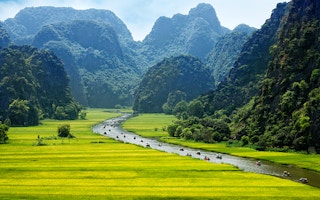The term Anthropocene — popularized by Nobel prize–winning chemist Paul Crutzen — refers to a new epoch of Earth’s history in which human activities became a dominant force in shaping the environment. This epoch has also become a dominant force in shaping the environmental community — creating two distinct factions, each working for a fundamentally different world.
Traditional environmentalists are predominantly focused on preserving (or restoring) the world as it was before the industrial age, with its historical patterns of climate, natural resources, wild areas and biodiversity — a time known to geologists as the Holocene. But, as Bill McKibben notes in his seminal book, The End of Nature, we have already transformed the entire surface of the planet. We like to believe that some parts of the world are still completely pristine, such as the tropical rainforests or the remote Arctic, but even those places have been changed by human activities — despite any direct human presence — because the atmosphere above them has a different chemistry (mainly due to increasing greenhouse gases and other pollutants) than anything seen in the Holocene.
So, if every corner of the world has been touched — at least in part — by human activity, how can we preserve and maintain Holocene-style nature?
“
Like it or not, we have already changed the planet in significant ways, and there is no simple way to go back. But I believe it is wrong to say that we no longer need to worry about preserving the Holocene biosphere
Some in the second faction, the so-called post-environmentalists, suggest we shouldn’t bother. Why, they ask, of all of the different environments, climates and biotic assemblages this planet has seen over the past 4 billion years plus, should the roughly 10,000-year period between the end of the last ice age and beginning of the industrial era be considered the only “natural” and worthy option? What makes this era so special and worth preserving indefinitely into the future? Just because most of our civilization’s history, including the invention of agriculture, fire and other critical advances, occurred during the Holocene, does that mean we should try to maintain those conditions forever? Why not preserve the last ice age, which lasted far longer than the Holocene, or the Pliocene? As some post-environmentalists have suggested, preserving the planet in a Holocene state is like putting the world inside a museum, recording a particular moment in time. Such an effort, for this group, is seen as ultimately arbitrary and pointless.
In short, while most traditional environmentalists want to preserve the Holocene environment, at least some post-environmentalists think that we should focus instead on building the Anthropocene.
So, which is the right world to be fighting for? I think both positions have their merits and shortcomings.
Our aesthetic and spiritual connection to nature and wilderness, and our desire to maintain the Holocene version of the planet, is something that sadly is no longer completely practical. Like it or not, we have already changed the planet in significant ways, and there is no simple way to go back. Furthermore, the planet will soon have 9 billion people with considerably more wealth and aspirations, dramatically increasing demands on natural resources and the planet.
But I believe it is wrong to say that we no longer need to worry about preserving the Holocene biosphere.
In fact, there are two very practical arguments for preserving as much of the natural Holocene world as reasonably possible. Neither has anything to do with sentiment or aesthetics — but everything to do with the future of our civilization.
First, we are only now learning the tremendous extent to which natural ecosystems provide essential goods and services to humanity, even if they don’t show up in our formal economy or on our balance sheets. Whether by providing clean water, fresh air, pollinating insects or protection from natural disasters, natural ecosystems are extraordinarily valuable to society. In short, we need to preserve the working ecosystems and natural capital of our planet as an investment for our future. And, we need to preserve as much of the world’s remaining species and biodiversity as possible to ensure the stability and functioning of those ecosystems and services.
Second, nature is a hell of an engineer — much better than any of us — so we need to preserve our natural systems as functioning role models for building better human systems. Consider the evidence: Natural systems have no real “waste” (one organism’s waste is just another’s food), everything is built at ambient temperatures (tell that to most chemical engineers and watch their heads explode) and the whole system runs on renewable energy. We can’t even come close to doing that.
Preservation of the biosphere as close to its Holocene state as possible is not just a feel-good exercise of old-school environmentalists; it’s absolutely essential. Not doing so is akin to burning the instruction manual to an incredibly complicated machine, which we depend upon entirely, before we’ve even learned how to operate it.
Of course, we can’t go back to a fully natural Holocene planet. Sadly, that epoch has already come and gone. We have to accept that. But we also must be careful not to simply bandy about the term “Anthropocene” and think that we are bold designers of the planet’s future, ready to take over the stewardship of Earth’s environment. Frankly, we wouldn’t even know where to begin.
Ultimately, we might enter a period in which humans are wise enough to manage the planet (perhaps the “Sophicene,” the age of wisdom). In the meantime, we should have the humility to maintain the best semblance possible of the Holocene version of the planet as long as we can.
Jonathan Foley (@GlobalEcoGuy) is director of the Institute on the Environment at the University of Minnesota. These views are his own, and do not reflect those of the University of Minnesota or any other organization. This post originally appeared here.










